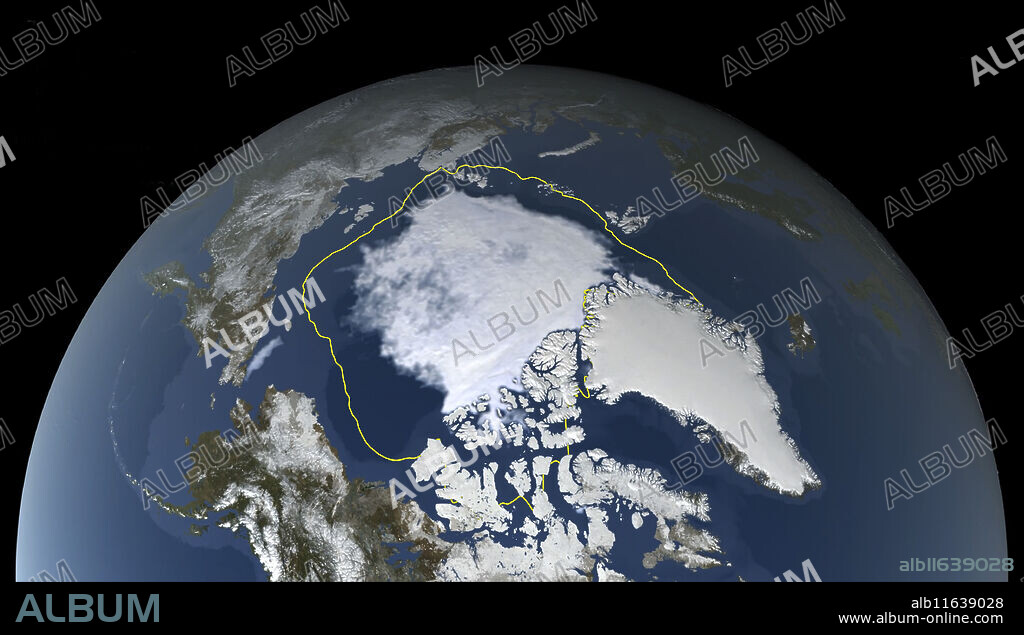alb11639028
Arctic ice minimum extent, 2024

|
Add to another lightbox |
|
Add to another lightbox |



Buy this image.
Select the use:

Title:
Arctic ice minimum extent, 2024
Caption:
Satellite image showing the Arctic polar ice cap at its annual minimum extent on 11th September 2024. The Arctic sea ice (white, centre) reaches a minimum in September, at the end of the Arctic summer. This minimal ice area is called the perennial ice cover. The perennial ice has been steadily decreasing since satellites began observing it in 1979, at a rate of about 10 percent per decade. The yellow boundary shows the minimum extent averaged over the 30-year period from 1981 to 2010. The 2024 sea ice covers 4.28 million square kilometres and is the 7th lowest sea ice extent since records began. The decrease in perennial ice cover is attributed to climate change. Data from the Japan Aerospace Exploration Agency's Advanced Microwave Scanning Radiometer 2 (AMSR2) instrument aboard the Global Change Observation Mission 1st-Water (GCOM-W1).
Credit:
Album / NASA's Scientific Visualization Studio/SCIENCE PHOTO LIBRARY
Releases:
Model: No - Property: No
Rights questions?
Rights questions?
Image size:
3941 x 2240 px | 25.3 MB
Print size:
33.4 x 19.0 cm | 13.1 x 7.5 in (300 dpi)
Keywords:
11 • 1ST-WATER • 2 • 2024 • 21ST CENTURY • 21ST • 21TH CENTURY • ADVANCED • AMSR2 • ANNUAL • ARCTIC • CANCELLATION • CAP • CENTURY • CHANGE • CIRCLE • CLIMATE • CLIMATOLOGICAL • CLIMATOLOGY • COVER • DECLINE • DECLINED • DECLINING • DISAPPEARING • EARTH • ENVIRONMENT • ENVIRONMENTAL • EXTENT • FLEET • FROM • GCOM-W1 • GEOGRAFIA • GEOGRAPHICAL • GEOGRAPHY • GLACE • GLOBAL • ICE (WEATHER) • ICE • ICE, FROZEN LAKES&STREAMS • IMAGE • LOSING • LOSS • MARINE • MELTING • MICROWAVE • MINIMUM • MISSION • NAVY • NO ONE • NO-ONE • NOBODY • OBSERVATION • OCEAN • OCEANS • OUTERSPACE • PERENNIAL • POLAR • RADIOMETER • RECEDE • RECEDED • RECEDING • REFUSAL • REGION • RETREAT • RETREATED • RETREATING • SATELLITE • SCANNING • SEA • SEA. • SEAS • SEPTEMBER • SHRINKING • SPACE (COSMOS) • SPACE • SPATIAL • VANISHING • WARMING • YEARLY
 Pinterest
Pinterest Twitter
Twitter Facebook
Facebook Copy link
Copy link Email
Email
